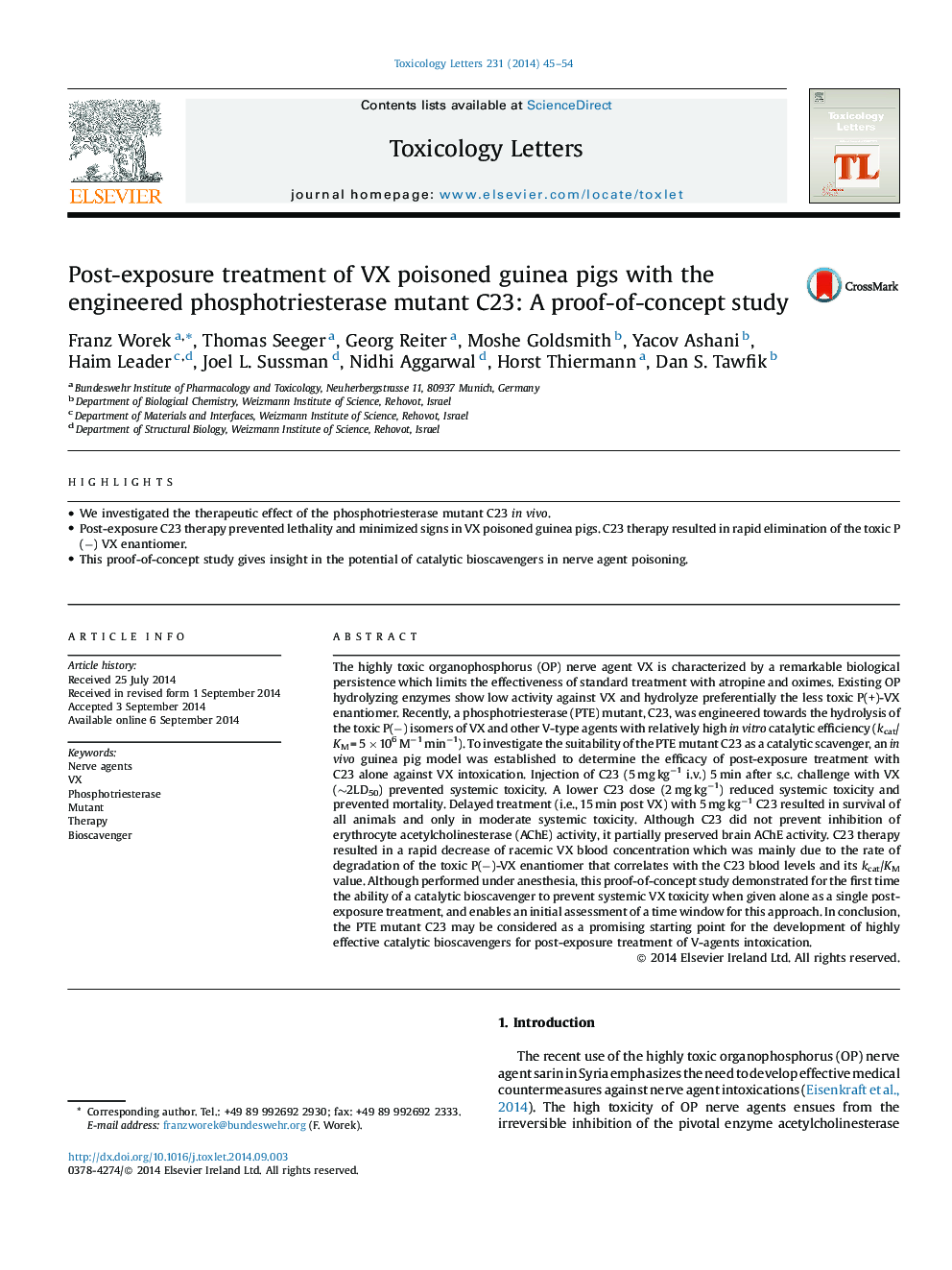| کد مقاله | کد نشریه | سال انتشار | مقاله انگلیسی | نسخه تمام متن |
|---|---|---|---|---|
| 2598890 | 1133161 | 2014 | 10 صفحه PDF | دانلود رایگان |

• We investigated the therapeutic effect of the phosphotriesterase mutant C23 in vivo.
• Post-exposure C23 therapy prevented lethality and minimized signs in VX poisoned guinea pigs. C23 therapy resulted in rapid elimination of the toxic P(−) VX enantiomer.
• This proof-of-concept study gives insight in the potential of catalytic bioscavengers in nerve agent poisoning.
The highly toxic organophosphorus (OP) nerve agent VX is characterized by a remarkable biological persistence which limits the effectiveness of standard treatment with atropine and oximes. Existing OP hydrolyzing enzymes show low activity against VX and hydrolyze preferentially the less toxic P(+)-VX enantiomer. Recently, a phosphotriesterase (PTE) mutant, C23, was engineered towards the hydrolysis of the toxic P(−) isomers of VX and other V-type agents with relatively high in vitro catalytic efficiency (kcat/KM = 5 × 106 M−1 min−1). To investigate the suitability of the PTE mutant C23 as a catalytic scavenger, an in vivo guinea pig model was established to determine the efficacy of post-exposure treatment with C23 alone against VX intoxication. Injection of C23 (5 mg kg−1 i.v.) 5 min after s.c. challenge with VX (∼2LD50) prevented systemic toxicity. A lower C23 dose (2 mg kg−1) reduced systemic toxicity and prevented mortality. Delayed treatment (i.e., 15 min post VX) with 5 mg kg−1 C23 resulted in survival of all animals and only in moderate systemic toxicity. Although C23 did not prevent inhibition of erythrocyte acetylcholinesterase (AChE) activity, it partially preserved brain AChE activity. C23 therapy resulted in a rapid decrease of racemic VX blood concentration which was mainly due to the rate of degradation of the toxic P(−)-VX enantiomer that correlates with the C23 blood levels and its kcat/KM value. Although performed under anesthesia, this proof-of-concept study demonstrated for the first time the ability of a catalytic bioscavenger to prevent systemic VX toxicity when given alone as a single post-exposure treatment, and enables an initial assessment of a time window for this approach. In conclusion, the PTE mutant C23 may be considered as a promising starting point for the development of highly effective catalytic bioscavengers for post-exposure treatment of V-agents intoxication.
Journal: Toxicology Letters - Volume 231, Issue 1, 18 November 2014, Pages 45–54